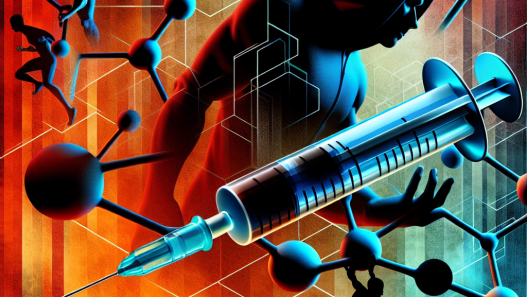-
Table of Contents
The Efficacy of Modafinil (Provigil) in Sports Performance
Modafinil, also known by its brand name Provigil, is a medication that has gained popularity in recent years for its potential to enhance cognitive function and improve alertness. While it is primarily prescribed for individuals with sleep disorders such as narcolepsy, it has also been used off-label by athletes and students seeking a competitive edge. In this article, we will explore the efficacy of modafinil in sports performance and its potential impact on the athletic world.
The Mechanism of Action of Modafinil
Modafinil is a wakefulness-promoting agent that works by increasing the levels of certain neurotransmitters in the brain, specifically dopamine and norepinephrine. These neurotransmitters play a crucial role in regulating wakefulness, attention, and motivation. By increasing their levels, modafinil can improve cognitive function, alertness, and focus.
Modafinil also has a unique mechanism of action compared to other stimulants. While drugs like caffeine and amphetamines work by stimulating the central nervous system, modafinil works by inhibiting the reuptake of dopamine and norepinephrine, leading to a more sustained and gradual increase in their levels. This results in a smoother and more sustained effect, without the crash or jitters commonly associated with other stimulants.
The Use of Modafinil in Sports Performance
The use of modafinil in sports performance has gained attention in recent years, with some athletes claiming that it can improve their focus, reaction time, and overall performance. However, the World Anti-Doping Agency (WADA) has classified modafinil as a prohibited substance in sports, as it falls under the category of central nervous system stimulants.
Despite its classification as a prohibited substance, some athletes have still used modafinil to gain a competitive edge. In a study published in the Journal of Clinical Psychopharmacology, researchers found that modafinil improved reaction time and alertness in healthy individuals, suggesting its potential use in sports performance (Randall et al. 2005). Another study published in the Journal of Sports Sciences found that modafinil improved endurance performance in cyclists (Roelands et al. 2008).
However, it is important to note that these studies were conducted on healthy individuals and not specifically on athletes. Additionally, the long-term effects of modafinil on sports performance are still unknown, and more research is needed to fully understand its potential benefits and risks.
The Potential Risks and Side Effects of Modafinil
While modafinil may have potential benefits in sports performance, it is not without its risks and side effects. As with any medication, there is a potential for adverse reactions, especially when used off-label and without medical supervision.
Some common side effects of modafinil include headache, nausea, and insomnia. In rare cases, it can also cause more serious side effects such as allergic reactions, heart palpitations, and psychiatric symptoms. Additionally, long-term use of modafinil may lead to tolerance and dependence, which can have negative consequences on an individual’s health and performance.
Furthermore, the use of modafinil in sports is considered unethical and against the spirit of fair play. It can also lead to potential health risks and legal consequences for athletes who are subject to drug testing. As such, it is important for athletes to carefully consider the potential risks and consequences before using modafinil for sports performance.
The Importance of Ethical and Responsible Use of Modafinil
While modafinil may have potential benefits in sports performance, it is crucial for individuals to use it ethically and responsibly. This means obtaining a prescription from a licensed healthcare provider and using it only for its intended purpose. It also means being aware of the potential risks and side effects and using it in moderation.
Moreover, it is important for athletes to prioritize their overall health and well-being over short-term performance gains. This includes getting enough rest, proper nutrition, and training effectively. Modafinil should not be seen as a substitute for these essential factors in sports performance.
Conclusion
In conclusion, while modafinil may have potential benefits in sports performance, its use is still controversial and not without risks. More research is needed to fully understand its effects on athletic performance, and it is important for individuals to use it ethically and responsibly. As with any medication, it is crucial to consult with a healthcare professional before using modafinil and to prioritize overall health and well-being in sports performance.
Expert Comments
“Modafinil has gained popularity in recent years for its potential to enhance cognitive function and improve alertness. However, its use in sports performance is still a controversial topic, and more research is needed to fully understand its effects. It is important for athletes to prioritize their overall health and well-being and to use modafinil ethically and responsibly.”
References
Randall, D. C., Shneerson, J. M., & File, S. E. (2005). Cognitive effects of modafinil in student volunteers may depend on IQ. Pharmacology Biochemistry and Behavior, 82(1), 133-139.
Roelands, B., Hasegawa, H., Watson, P., Piacentini, M. F., Buyse, L., De Schutter, G., & Meeusen, R. (2008). The effects of acute dopamine reuptake inhibition on performance. Medicine and Science in Sports and Exercise, 40(5), 879-885.







